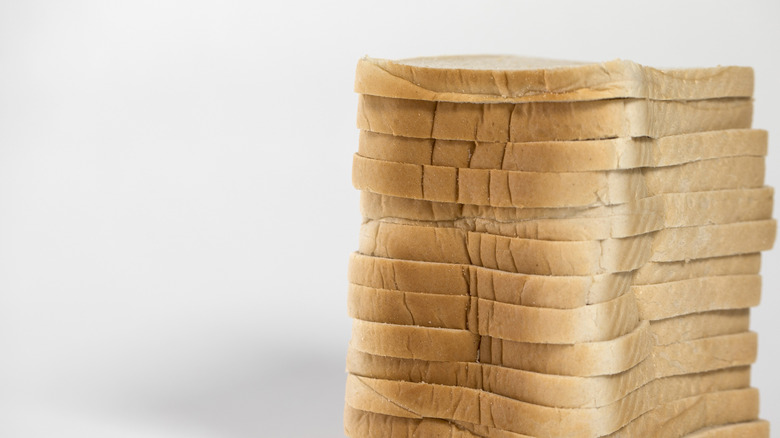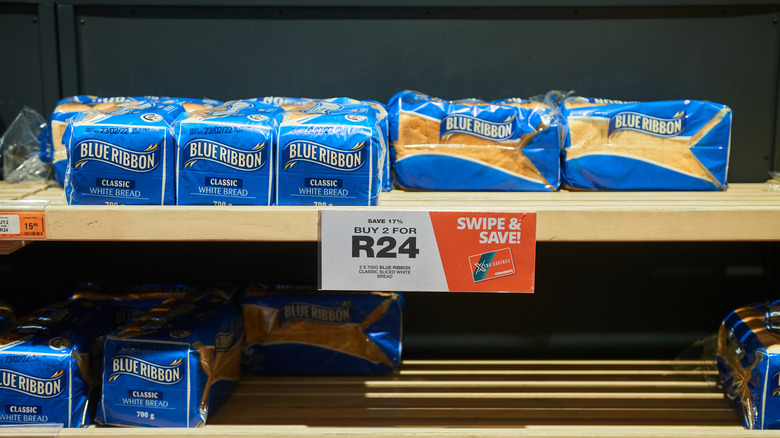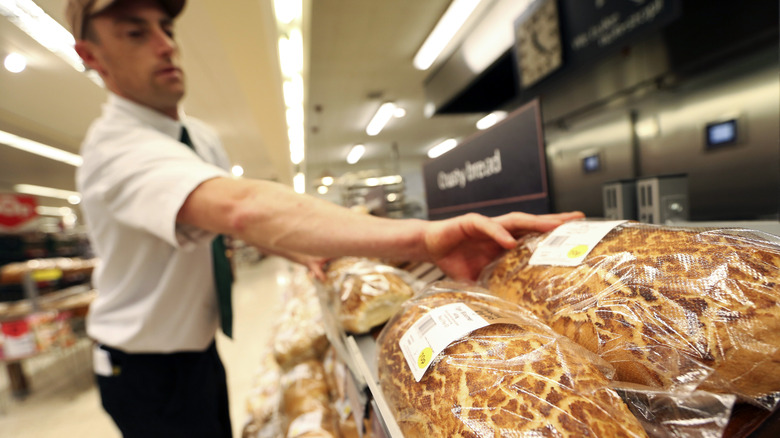The Real Reason More And More Shoppers Are Saying No To Bread
In today's insane and rapidly-changing world, nobody is safe — not even bread. As the U.S. sees the highest inflation rates in four decades, U.S. bread sales have seen a 2.7% decline since the start of the year, reports Bloomberg. According to the New York Post, it's now becoming more common to see a two-pound loaf of bread with a $10 price tag. Just last month, it says, grocery prices increased by 12.2% — a huge contributor to this year's overall 9.1% Consumer Price Index (CPI) inflation increase, says the Associated Press.
The U.S. Bureau of Labor Statistics reports that, in June 2022, the cost of whole wheat bread per pound hit $2.23: the highest price on record. In Manhattan, a 22-ounce loaf of whole wheat sliced bread at Trader Joe's still costs only $1.99 But, specialty and artisanal loaves are seeing higher prices than ever before. A 27-ounce loaf of Dave's Killer Bread at Manhattan's Fairway Market costs $6.99, and a 16-ounce loaf of Keto Bread at a Brooklyn Whole Foods Market is on sale for a whopping $7.79, and here's why.
U.S. consumers and retailers can't keep up
In March, Reuters reported that Russia's invasion of Ukraine in late February had already driven wheat prices higher than they'd been in 14 years. Collectively, it says, the countries accounted for 30% of global wheat supply and 20% of global corn supply prior to the conflict.
As part of the international fallout, U.S. bread prices in 2022 are 107.50% higher than in 1997 — a $5.37 buying power value difference and an inflation rate of 2.96% per year, says global inflation data analytics platform In 2013 Dollars. Mark Cohen, director of retail studies at Columbia University, calls a $10 loaf of bread "a punch in the nose" to shoppers, via Bloomberg – and retailers aren't happy about it, either. Vincent Colombet, owner of Chicago bakery chain La Boulangerie & Co., told the news outlet that the business is faced with the conundrum of managing higher production costs while still keeping prices low enough to attract customers: "We are really squished between the hammer and the anvil." And, it isn't just the U.S. market affected, either.
Global food shortage causes wheat inflation
Countries around the world are being affected by the wheat shortage. In Zimbabwe, says Global Press Journal, many already-food-insecure households are opting for cheaper options or foregoing it altogether as loaf prices soar — which could have dire health consequences. Dr. Fungai Mvura, Hwange medical officer at the Ministry of Health and Child Care, says "Bread is part of carbohydrates, which is the main source of energy," via the news outlet. "In the long run, cutting down on such products may lead to weight loss, not in the form of fats but loss of calories found in carbohydrates."
In America, says the New York Post, this new era global food crisis and subsequent inflation has forced most households to pay nearly $500 every month just to cover everyday expenses. Robb MacKie, president and chief executive of the American Bakers Association, predicted these ramifications as early as March. "Unfortunately for the short and intermediate-term, food inflation and the cost of baked goods in the United States will go up more," Mackie said, via Reuters. "This will impact the most vulnerable in our society the most."


